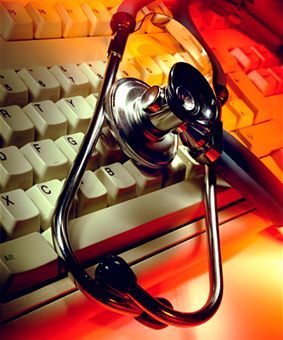How to Diagnose a Broken Computer


When Computers Break
Computers make our lives better in so many ways, but when they fail they can be indescribably frustrating. Increasingly, many of us have a good portion of our lives on the computer. From our important documents, pictures, and files to our music and movies to the games and other activities that we choose to spend time on, the computer is the location of a huge percentage of contemporary life. When your computer breaks, it can feel a lot like being stuck in a place where you don’t want to be. Without the computer, so much of what you do on a day-to-day basis is suddenly unavailable. The good news is, by following a few easy steps you should be able to avoid panicking and head down the road to repairing your machine.
Turn off the Internet
The first step when you are having serious computer trouble is to avoid making the problem worse. This can be difficult if you have no idea what the problem is, but there are a few tricks you can use make sure you don’t do further damage. First, if you still have access to the internet, disable it until you are sure the problem isn’t caused by a virus. If you do have a virus, it’s important that you don’t allow it to contact other computers or exchange information over the internet. After you have disabled the internet, you can run full system scans for viruses and malware. If you don’t have free antivirus and anti-malware programs already installed, do that as soon as possible, so you are prepared in the event of a computer problem.
Retrace Your Steps
After you have ruled out viruses and malware as the cause of your computer issue, it is usually safe to turn the internet back on. This will allow you to search message boards and tech support forums for advice on how to deal with your specific problem. Before you do that, however, consider what you were doing when the problem began, and what you did in the few minutes, hours, or days prior to the start of the issue. Retracing your steps this way will help you narrow down the problem. You may be able to identify what caused the problem just by thinking about what happened before.
Reverse Any Recent Changes
As you retrace your steps, ask yourself these questions: Did I install anything recently? Did I change any system or program settings recently? Did I update any software or drivers recently? Did I install any new hardware or external devices (like a new mouse or keyboard) recently? If you answer “Yes” to any of these questions, there is a good chance that your recent changes are the cause of the problem. There are several reasons that changes like this can cause issues, including compatibility conflicts or registry errors. Try reversing your changes if possible. Uninstall any recently installed programs, reset settings to defaults, or go back to old versions of drivers or software. After doing this, restart the computer to see if the issue is resolved.
Restart in Safe Mode
If your computer trouble prevents you from opening programs or accessing the internet, consider running your operating system in Safe Mode. In Safe Mode, you will be unable to do many of the things you normally do on your computer, but you may regain the ability to uninstall programs or reverse any changes that could be causing issues. If your problem is caused by an issue in the Windows registry, you may be able to repair the registry using a utility or free program in Safe Mode.
Diagnose Faulty RAM
In the event that your computer does not turn on at all, there are still a few things you can do to diagnose the problem before you resort to taking it to a repair technician. One common cause of computers not turning on is faulty RAM, or memory. If you are confident opening up your computer and removing the RAM, do this, trying to turn the computer on with one chip at a time and alternating which RAM slots you put them in. If the computer turns on, one of your RAM chips is faulty and you can replace it yourself. If this is not the problem, it is likely that you have another hardware issue.
Don’t Forget to Back Up Data!
If you are unfamiliar with computer hardware, it is best to take the computer to a repair technician at this point. However, if you feel comfortable repairing computers yourself, connect to the internet using another computer and search for instructions and advice. The internet is a wonderful resource for repairing computers and you can find a solution to almost any problem online. One last word of advice: remember to back up your important data! Even if your computer is running fine now, you could run into trouble at any time. Good backups will pay off in the long run!

